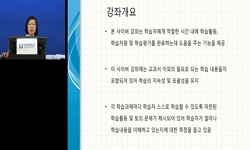Objective: Triage in the emergency department is important as mistriage leads to inefficient use of resources. The Korean Triage and Acuity Scale (KTAS) was developed in 2012 and has been implemented in emergency departments nationwide since January 2...
http://chineseinput.net/에서 pinyin(병음)방식으로 중국어를 변환할 수 있습니다.
변환된 중국어를 복사하여 사용하시면 됩니다.
- 中文 을 입력하시려면 zhongwen을 입력하시고 space를누르시면됩니다.
- 北京 을 입력하시려면 beijing을 입력하시고 space를 누르시면 됩니다.

소아전문응급의료센터에서 한국형 응급환자 분류도구의 자원 사용 예측에 대한 유용성 = Role of the Korean Triage and Acuity Scale to predict resource utilization in pediatric emergency center
한글로보기https://www.riss.kr/link?id=A107831126
- 저자
- 발행기관
- 학술지명
- 권호사항
-
발행연도
2021
-
작성언어
Korean
- 주제어
-
등재정보
KCI등재
-
자료형태
학술저널
- 발행기관 URL
-
수록면
371-376(6쪽)
-
KCI 피인용횟수
0
- 제공처
- 소장기관
-
0
상세조회 -
0
다운로드
부가정보
다국어 초록 (Multilingual Abstract)
Objective: Triage in the emergency department is important as mistriage leads to inefficient use of resources. The Korean Triage and Acuity Scale (KTAS) was developed in 2012 and has been implemented in emergency departments nationwide since January 2016. The purpose of this study was to determine whether KTAS can predict resource use in a pediatric emergency center.
Methods: From October to December 2019, a retrospective analysis was conducted by a review of medical records.
Demographic data, KTAS grades, Emergency Severity Index (ESI) as an indicator of resource utilization and details of the use of each resource were collected. Patients were divided into non-trauma and trauma groups. KTAS grades 1 and 2 were defined as the severe group, grade 3 was the moderate group, and grades 4 and 5 were defined as the mild group. We investigated whether triage using KTAS is related to resource utilization.
Results: In the non-trauma group, ESI, length of stay in the emergency department, and hospitalization were significantly correlated with the KTAS groups. In the trauma group, there was no significant difference between the moderate and mild groups in the above variables except for hospitalization. This was because there was no significant difference in sedation, procedure, and intravenous injection, in the trauma group.
Conclusion: The KTAS triage helped predict resource utilization in the non-trauma group, but not in the trauma group especially between the moderate and mild groups. Additional research will be needed to predict resource utilization in children with trauma.
참고문헌 (Reference)
1 박준범, "한국형 응급환자 분류도구의 이해" 대한응급의학회 28 (28): 547-551, 2017
2 노현, "한국형 응급환자 분류도구의 소아 적용을 위한 델파이 조사 연구" 대한응급의학회 30 (30): 83-93, 2019
3 이인혜, "한국형 응급환자 분류도구(Korean Triage and Acuity Scale) 타당도 분석" 대한응급의학회 29 (29): 13-20, 2018
4 신진욱, "일개 어린이병원 응급실에서 시행한 새롭게 개발된 소아 5단계 중증도 분류의 타당도 연구" 대한응급의학회 28 (28): 557-563, 2017
5 김진영, "응급센터를 방문한 성인 환자의 중증도 분류 지표로서 한국형 중증도 분류체계의 신뢰도 분석: 일개 지역응급의료센터의 예비연구" 대한응급의학회 28 (28): 552-556, 2017
6 오원철, "발열 소아 환자의 한국형 응급환자 분류도구에서의 고려사항: 증상 발현 시간" 대한응급의학회 30 (30): 69-76, 2019
7 Eitel DR, "The emergency severity index triage algorithm version 2 is reliable and valid" 10 : 1070-1080, 2003
8 Tanabe P, "The Emergency Severity Index(version 3)5-level triage system scores predict ED resource consumption" 30 : 22-29, 2004
9 Gilboy N, "The Emergency Severity Index version 4 : changes to ESI level 1 and pediatric fever criteria" 31 : 357-362, 2005
10 Lee K, "Study for standardization of Korean Triage and Acuity Scale" Ministry of Health and Welfare 2012
1 박준범, "한국형 응급환자 분류도구의 이해" 대한응급의학회 28 (28): 547-551, 2017
2 노현, "한국형 응급환자 분류도구의 소아 적용을 위한 델파이 조사 연구" 대한응급의학회 30 (30): 83-93, 2019
3 이인혜, "한국형 응급환자 분류도구(Korean Triage and Acuity Scale) 타당도 분석" 대한응급의학회 29 (29): 13-20, 2018
4 신진욱, "일개 어린이병원 응급실에서 시행한 새롭게 개발된 소아 5단계 중증도 분류의 타당도 연구" 대한응급의학회 28 (28): 557-563, 2017
5 김진영, "응급센터를 방문한 성인 환자의 중증도 분류 지표로서 한국형 중증도 분류체계의 신뢰도 분석: 일개 지역응급의료센터의 예비연구" 대한응급의학회 28 (28): 552-556, 2017
6 오원철, "발열 소아 환자의 한국형 응급환자 분류도구에서의 고려사항: 증상 발현 시간" 대한응급의학회 30 (30): 69-76, 2019
7 Eitel DR, "The emergency severity index triage algorithm version 2 is reliable and valid" 10 : 1070-1080, 2003
8 Tanabe P, "The Emergency Severity Index(version 3)5-level triage system scores predict ED resource consumption" 30 : 22-29, 2004
9 Gilboy N, "The Emergency Severity Index version 4 : changes to ESI level 1 and pediatric fever criteria" 31 : 357-362, 2005
10 Lee K, "Study for standardization of Korean Triage and Acuity Scale" Ministry of Health and Welfare 2012
11 Gravel J, "Safety of a modification of the triage level for febrile children 6 to 36 months old using the Paediatric Canadian Triage and Acuity Scale" 10 : 32-37, 2008
12 Gravel J, "Performance of the Canadian Triage and Acuity Scale for children : a multicenter database study" 61 : 27-32, 2013
13 Chan TC, "Patients’satisfaction when denied authorization for emergency department care by their managed care plan" 15 : 611-616, 1997
14 Cherry DK, "National ambulatory medical care survey: 2001 summary" (337) : 1-44, 2003
15 The Korean Society of Emergency Medicine KTAS Committee, "Korean Triage and Acuity Scale-Provider training manual version 3" Koonja 16-19, 2017
16 Wuerz RC, "Implementation and refinement of the emergency severity index" 8 : 170-176, 2001
17 Green NA, "Emergency Severity Index version 4 : a valid and reliable tool in pediatric emergency department triage" 28 : 753-757, 2012
18 Shih FY, "ED overcrowding in Taiwan : facts and strategies" 17 : 198-202, 1999
19 Inokuchi R, "Development of information systems and clinical decision support systems for emergency departments : a long road ahead for Japan" 30 : 914-917, 2013
20 Lynn SG, "Critical decision making : managing the emergency department in an overcrowded hospital" 20 : 287-292, 1991
21 이봉진, "Clinical Considerations When Applying Vital Signs in Pediatric Korean Triage and Acuity Scale" 대한의학회 32 (32): 1702-1707, 2017
22 Beveridge R, "CAEP issues. The Canadian Triage and Acuity Scale: a new and critical element in health care reform. Canadian Association of Emergency Physicians" 16 : 507-511, 1998
23 Lim T, "Assessment for validity and reliability of Korean Triage and Acuity Scale"
24 Medicaid Access Study Group, "Access of Medicaid recipients to outpatient care" 330 : 1426-1430, 1994
동일학술지(권/호) 다른 논문
-
급성 호흡부전 환자에서 고유량 비강캐뉼라 적용 실패 시 기관삽관 및 기계호흡기 적용 예측 지표
- 대한응급의학회
- 장진국
- 2021
- KCI등재
-
생애 주기에 따른 낙상 환자의 발생 특성과 사망 위험 요인
- 대한응급의학회
- 유재영
- 2021
- KCI등재
-
기상 요소와 자살 시도 후 일개 응급의료센터로 내원한 환자 수 사이의 연관성
- 대한응급의학회
- 명재영
- 2021
- KCI등재
-
Characteristics of alcohol-related non-traffic accident trauma patients
- 대한응급의학회
- 어성준
- 2021
- KCI등재
분석정보
인용정보 인용지수 설명보기
학술지 이력
| 연월일 | 이력구분 | 이력상세 | 등재구분 |
|---|---|---|---|
| 2027 | 평가예정 | 재인증평가 신청대상 (재인증) | |
| 2021-01-01 | 평가 | 등재학술지 유지 (재인증) |  |
| 2020-05-08 | 학회명변경 | 영문명 : The Korean Society Of Emergency Medicine -> The Korean Society of Emergency Medicine |  |
| 2018-01-01 | 평가 | 등재학술지 유지 (등재유지) |  |
| 2015-01-01 | 평가 | 등재학술지 유지 (등재유지) |  |
| 2011-01-01 | 평가 | 등재학술지 유지 (등재유지) |  |
| 2009-01-01 | 평가 | 등재학술지 유지 (등재유지) |  |
| 2006-01-01 | 평가 | 등재학술지 선정 (등재후보2차) |  |
| 2005-01-01 | 평가 | 등재후보 1차 PASS (등재후보1차) |  |
| 2003-01-01 | 평가 | 등재후보학술지 선정 (신규평가) |  |
학술지 인용정보
| 기준연도 | WOS-KCI 통합IF(2년) | KCIF(2년) | KCIF(3년) |
|---|---|---|---|
| 2016 | 0.23 | 0.23 | 0.22 |
| KCIF(4년) | KCIF(5년) | 중심성지수(3년) | 즉시성지수 |
| 0.22 | 0.22 | 0.339 | 0.06 |




 KISS
KISS







